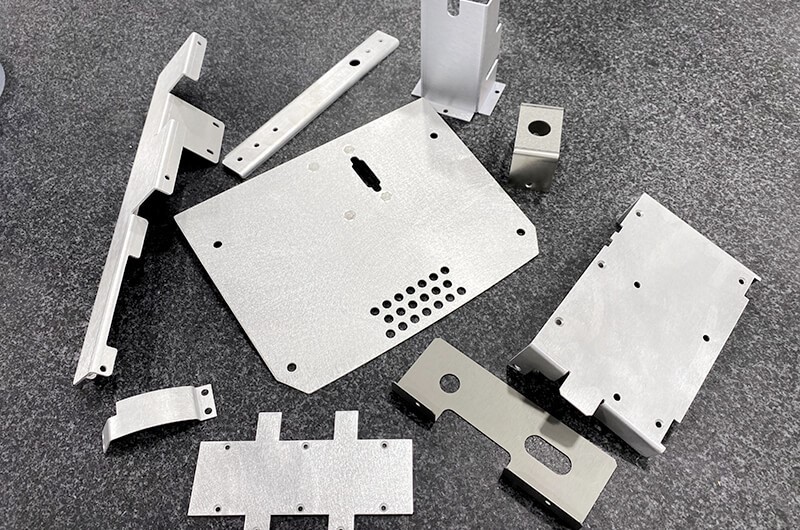Sheet metal prototyping is a vital component of modern manufacturing, enabling engineers and designers to rapidly create functional prototypes. This process ensures products meet strict quality standards and design specifications, minimizing risks and costs before full-scale production begins. By leveraging sheet metal prototyping, manufacturers can significantly enhance efficiency, reduce lead times, and improve overall product quality. Let’s learn more about how sheet metal prototyping subtly transformed the way we take ideas from conception to completion.

What is Sheet Metal Prototyping and Why is It Important?
Sheet metal prototyping is a crucial process that helps manufacturers create functional models of their designs before moving to full-scale production. By using this technique, designers and engineers can test, refine, and perfect their products while saving time and costs. This section will explore the fundamentals of sheet metal prototyping and why it's become an essential tool in modern manufacturing.
Understanding Sheet Metal Prototyping
A sheet metal prototype is the link between creative concepts and finished goods. Businesses can test, validate, and improve their ideas before committing to full-scale manufacturing with this crucial procedure, which ensures the best possible product quality while saving time and money.
Key Benefits of Sheet Metal Prototypes in Modern Manufacturing
Sheet metal prototypes offer several key advantages that significantly impact product development. These prototypes provide quick turnaround times, reduce design risks, and offer cost-effective solutions for testing and refining designs. In this section, we will explore the key benefits of sheet metal prototyping and how it drives efficiency and accuracy in modern manufacturing.
Rapid Product Development with Sheet Metal Prototyping
One of the most significant advantages of using sheet metal prototypes is their cost-efficiency. By testing prototypes early in the design phase, manufacturers can identify design flaws or issues with materials before mass production begins. This approach helps to avoid expensive production runs of faulty designs and ensures the final product meets specifications while staying within budget.
Versatility Across Industries
The versatility of sheet metal prototyping is perhaps the most appealing feature of sheet metal prototyping. This method accommodates a wide range of industry requirements, ranging from precisely designed medical equipment enclosures to aerospace components that must endure harsh environments. Modern manufacturers use CNC equipment and sophisticated CAD software to accurately convert flat metal sheets into intricate, 3D components.
Cost-Effectiveness and Economic Impact
Sheet metal prototype is widely used in production because of its cost-effectiveness. Sheet metal prototype enables incremental design modifications without breaking the budget, unlike conventional manufacturing techniques that demand costly tooling up front. Both big and small businesses may develop and compete in the global market with this financial flexibility.
Speed and Quality: The Perfect Balance
The quick turnaround time of sheet metal prototyping is what really makes it unique. In a time when a product's time to market can determine its success, manufacturers have a significant competitive advantage when they can swiftly create working prototypes. Modern prototyping techniques guarantee accuracy and consistency throughout each iteration, so speed does not have to come at the sacrifice of quality.
Enhanced Design Flexibility and Risk Mitigation
The ability of sheet metal prototyping to find and fix design issues early in the development process is one of its most vital benefits. These early detection capabilities greatly decrease the possibility of expensive modifications occurring during mass manufacturing. Manufacturers can quickly test various material thicknesses, check assembly procedures, and apply design modifications without investing in costly production equipment; thereby, avoiding production delays and saving thousands of dollars in potential rework expenses.
The Future of Prototyping: AI Integration and Advanced Tooling
The combination of machine learning and artificial intelligence makes the future of sheet metal prototyping even more exciting. These technologies suggest changes, anticipate potential manufacturing issues, and optimize design procedures before production starts. Combined with advanced prototyping tooling, these innovations are expanding the realm of manufacturing possibilities.
Final Takeaway!
Sheet metal prototyping remains to be the core of manufacturing's ongoing evolution, spurring creativity, effectiveness, and accuracy. It is an essential tool for modern producers due to its cost-effectiveness, versatility, and quick turnaround time. Its influence on the direction of production is expected to grow even more as a result of developing technology and better prototype tools.
Frequently Asked Questions
What makes sheet metal prototyping essential for modern manufacturing?
Sheet metal prototyping is essential for sustaining competitiveness in modern manufacturing because it facilitates quick design validation, economical testing, and effective product development.
How does sheet metal prototyping reduce manufacturing costs?
Sheet metal prototyping avoids costly tooling requirements, permits design adjustments without incurring major additional expenses, and decreases material waste through precise, computer-controlled procedures.
What industries benefit most from sheet metal prototyping?
Sheet metal prototyping is essential to the development and testing of products in the automotive, consumer electronics, medical equipment, aerospace, and industrial machinery industries.
How long does the sheet metal prototyping process typically take?
Prototypes can be made in a few days to several weeks, depending on complexity. However, the process is a lot quicker than with conventional manufacturing techniques.
















